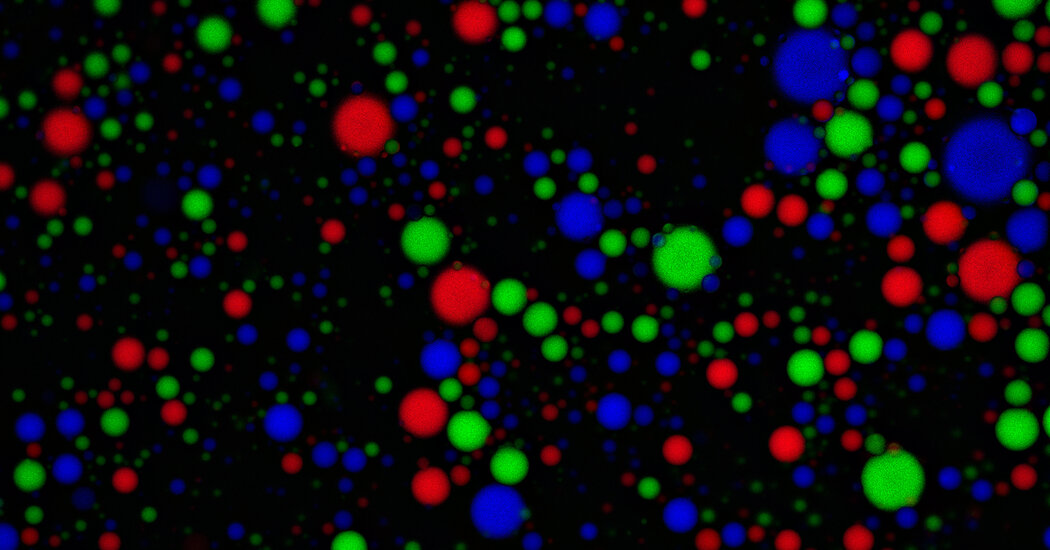Researchers stumbled upon an ingredient that can stabilize droplets of genetic material: water.
Rain may have been an essential ingredient for the origin of life, according to a study published on Wednesday.
Life today exists as cells, which are sacs packed with DNA, RNA, proteins and other molecules. But when life arose roughly four billion years ago, cells were far simpler. Some scientists have investigated how so-called protocells first came about by trying to recreate them in labs.
Many researchers suspect that protocells contained only RNA, a single-stranded version of DNA. Both RNA and DNA store genetic information in their long sequences of molecular “letters.”
But RNA can also bend into intricate shapes, turning itself into a tool for cutting or joining other molecules together. Protocells might have reproduced if their RNA molecules grabbed genetic building blocks to assemble copies of themselves.
One challenge to building protocells is choosing what to wrap them in. Modern cells are wrapped in membranes, barriers that tightly control how molecules move in and out. But this arrangement would have posed a problem for protocells. They would not have been able to take in the molecules they required to grow or to expel waste.
Some scientists have considered whether protocells formed without a membrane. They drew their inspiration from century-old chemical experiments in which researchers blended chemicals into a liquid. In some cases, some of the chemicals condensed into droplets that floated in the mixture. Could protocells have started off as membrane-free floating droplets?
